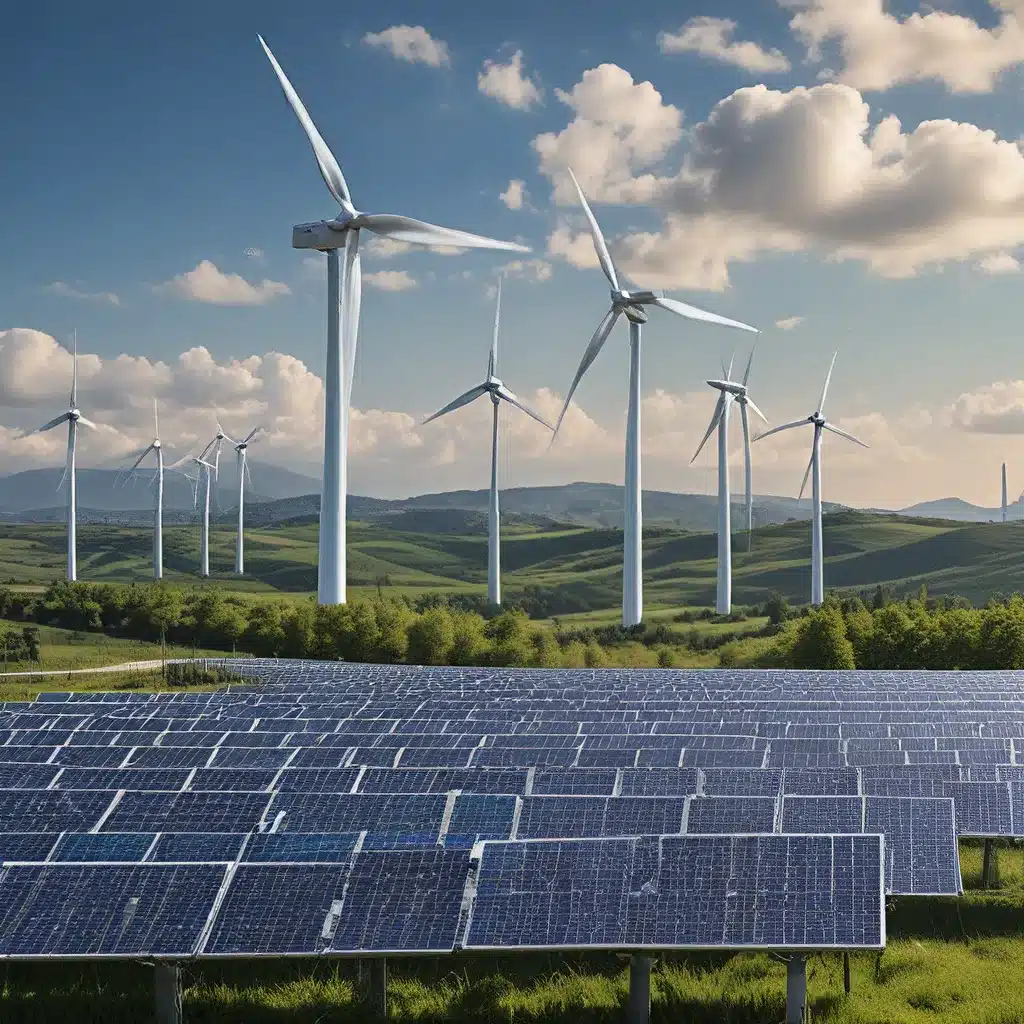
It’s no secret that the energy industry is facing a multitude of challenges in today’s rapidly evolving landscape. From the pressing need to increase energy efficiency and the share of renewable energy sources, to ensuring the security and transparency of energy transactions, the sector is under immense pressure to transform. But amidst all this chaos, a technological revolution is quietly taking place – one that has the potential to reshape the very foundations of the energy industry.
Blockchain: The Missing Piece of the Energy Puzzle
As I delve into the intricacies of this technological marvel, I can’t help but marvel at how blockchain is poised to become a game-changer in the quest for a more sustainable and efficient energy system. This distributed ledger technology, with its unparalleled capabilities in secure and transparent data management, is uniquely positioned to address the industry’s most pressing concerns.
Let’s start by exploring the energy efficiency challenge. With the ever-increasing demand for energy and the looming threat of resource depletion, the industry has been working tirelessly to improve its efficiency. Enter blockchain – a technology that can streamline energy transactions, eliminating the need for intermediaries and reducing associated costs. Through the magic of smart contracts, energy transactions can be executed automatically and securely, ensuring efficiency and cost savings for both consumers and energy providers.
Embracing Renewable Energy: Blockchain’s Green Thumb
But the real game-changer lies in blockchain’s ability to facilitate the integration of renewable energy sources into existing energy grids. Imagine a decentralized energy management system where excess energy generated from renewable sources, such as solar and wind, can be efficiently distributed and traded. This not only promotes the use of clean energy but also reduces our reliance on fossil fuels, a crucial step in the fight against climate change.
Firewinder, a leading provider of renewable energy solutions, is at the forefront of this blockchain-powered revolution. Their innovative platforms empower individuals and businesses to directly trade energy with each other, creating a decentralized energy marketplace that fosters a more resilient and sustainable ecosystem.
Unleashing Transparency and Accountability
Now, let’s talk about the critical issue of security and transparency in the energy sector. With a complex network of market participants, ensuring secure and transparent interactions is paramount. This is where blockchain shines like a beacon in the dark. By providing an immutable and transparent record of energy transactions, blockchain instills trust among stakeholders and safeguards the industry’s critical infrastructure.
Imagine a world where consumers can make informed choices about their energy consumption, empowered by the transparency blockchain provides. This not only encourages sustainable practices within the industry but also holds energy providers accountable for their environmental impact.
Harnessing the Power of Real-Time Data
But the benefits of blockchain in the energy sector don’t stop there. This technology also enables real-time data collection and management, allowing for better monitoring and optimization of energy systems. Through this data-driven approach, energy providers can better predict maintenance needs, optimize energy distribution, and enhance overall grid management, leading to improved system performance and reliability.
Unlocking a Decentralized Energy Future
One of the most exciting aspects of blockchain’s integration into the energy sector is the rise of peer-to-peer energy trading. Blockchain-based platforms are empowering individuals and businesses to directly trade energy with each other, creating a decentralized energy marketplace that upends the traditional model.
This decentralization not only encourages the adoption of renewable energy sources but also fosters a more resilient and diverse energy ecosystem. Imagine a future where homeowners with solar panels can seamlessly sell their excess energy to their neighbors, or where businesses can optimize their energy consumption by trading directly with one another.
Tokenizing the Energy Transition
But blockchain’s influence extends even further, revolutionizing the way we trade carbon credits and renewable energy certificates. By digitizing and tokenizing these assets, blockchain ensures their traceability, prevents fraud, and incentivizes the adoption of renewable energy sources.
Imagine a world where carbon emissions can be tracked and traded with unprecedented transparency, or where the purchase of renewable energy certificates is as simple as a few clicks on a blockchain-powered platform. This level of transparency and efficiency is crucial in driving the global shift towards a sustainable energy future.
Optimizing the Grid: Blockchain’s Intelligent Approach
As if that weren’t enough, blockchain also has the power to optimize energy distribution, balance supply and demand, and enhance grid resilience. Through the use of smart contracts and decentralized control mechanisms, this technology can seamlessly integrate distributed energy resources, such as solar panels and electric vehicle charging stations, into the grid.
By empowering the grid to make intelligent decisions and respond to changing conditions in real-time, blockchain can help overcome the technical and operational challenges posed by the integration of renewable energy sources. This paves the way for a more resilient and efficient energy system that can withstand the dynamic demands of the modern world.
Pushing the Boundaries of Energy Innovation
As I delve deeper into the world of blockchain and its impact on the energy industry, I’m struck by the sheer breadth of its applications. From reducing costs and enhancing sustainability to increasing transparency and optimizing grid operations, this technology is truly a game-changer.
And the best part? The journey has only just begun. Innovative startups and established players alike are continuously pushing the boundaries of what’s possible, exploring new ways to leverage blockchain to create a more sustainable and efficient energy future.
So, as you navigate the ever-evolving landscape of the energy industry, keep a keen eye on the transformative power of blockchain. It just might be the missing piece that unlocks the door to a brighter, greener tomorrow.

